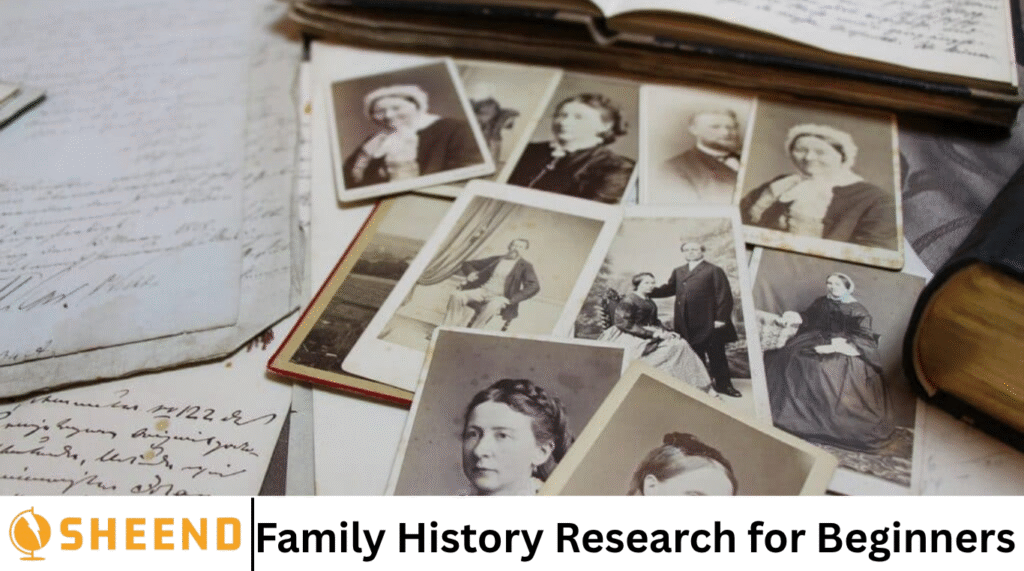Family history research is an exciting journey into the past that helps you uncover your roots, learn about your ancestors, and understand your heritage. For many, tracing their family tree becomes a rewarding hobby, connecting generations and preserving stories for the future. If you’re new to genealogy, starting can feel overwhelming. This guide breaks down everything you need to know to get started with family history research confidently.
More Read: Fascinating Insights into the Lives of Our Ancestors
Why Research Your Family History?
Discovering your family history offers more than just names and dates. It gives a sense of identity and belonging, connects you with relatives you may not have known existed, and helps you understand historical events from a personal perspective. Many people find it meaningful to:
- Learn about ancestors’ origins and cultures
- Discover stories of migration, hardship, and success
- Connect with living relatives and distant cousins
- Preserve family stories, photos, and documents
- Create a family tree as a keepsake for future generations
Getting Started: What You Need
Before diving in, gather some essential tools and information:
Basic Materials
- Notebook or digital note-taking app
- Computer with internet access
- Family photos and documents
- Storage folder for records and copies
Information to Collect First
Begin with yourself and work backward. Write down:
- Your full name, date, and place of birth
- Names, birthdates, marriage dates, and death dates of your parents and grandparents
- Any known stories or family lore
- Copies of birth, marriage, or death certificates if available
Interview Family Members
Your relatives are the best starting point. Older family members often have memories, stories, and documents you won’t find anywhere else. When interviewing:
- Prepare questions ahead of time (birthplaces, occupations, migrations)
- Record the conversation (with permission) or take detailed notes
- Ask for copies of old photos, letters, or documents
- Clarify spellings of names and places
Organize Your Information
Create a system to keep your research organized. You can use:
- Genealogy software (like Family Tree Maker, RootsMagic)
- Online family tree builders (Ancestry.com, MyHeritage, FamilySearch)
- Simple spreadsheets or physical binders
Make sure to record sources for each fact, so you can verify or revisit them later.
Explore Vital Records
Vital records include birth, marriage, and death certificates. These official documents provide reliable facts about your ancestors. Where to find them:
- Local or national government archives
- Online databases (some free, some paid)
- Churches or religious institutions (for older records)
Census Records and Other Public Records
Census records give snapshots of families every few years, listing names, ages, occupations, and residences. Other valuable public records include:
- Immigration and naturalization documents
- Military service records
- Wills and probate records
- Land and property deeds
Many of these are available online or at local archives.
Use Online Resources
The internet has revolutionized genealogy. Some top websites to explore:
- Ancestry.com: Extensive databases, DNA testing, family tree building (subscription-based)
- FamilySearch.org: Free records and family trees, run by the LDS Church
- MyHeritage.com: Family tree builder, DNA testing, global records
- FindAGrave.com: Cemetery records and tombstone photos
Tip: Always verify information from online trees with original documents to avoid errors.
Understand DNA Testing
DNA testing can reveal ethnic origins and connect you with relatives worldwide. Popular DNA tests include:
- Autosomal DNA (most common, traces both maternal and paternal lines)
- Y-DNA (father’s paternal line, for males)
- mtDNA (mother’s maternal line)
DNA testing is a useful complement but should be combined with traditional research.
Overcoming Common Challenges
Family history research isn’t always straightforward. You may encounter:
- Missing or damaged records
- Name changes or misspellings
- Conflicting information
- Brick walls where information stops
Tips to overcome these challenges:
- Double-check all sources and dates
- Explore alternative spellings and nearby locations
- Reach out to genealogy societies or online forums
- Take breaks and revisit difficult lines later with fresh eyes
Preserve and Share Your Findings
Once you start compiling your family history, consider ways to preserve and share it:
- Create a printed family tree book or chart
- Record oral histories on audio or video
- Build a private website or blog
- Share discoveries with family members via email or social media
- Donate copies of your research to local libraries or archives
Tools and Resources Summary
| Resource Type | Examples | Notes |
|---|---|---|
| Genealogy Software | Family Tree Maker, RootsMagic | Helps organize and visualize data |
| Online Databases | Ancestry, FamilySearch, MyHeritage | Access to records and family trees |
| DNA Testing Services | 23andMe, AncestryDNA | Ethnicity and relative matching |
| Archives & Libraries | National Archives, Local Courthouses | Original records, historical context |
| Genealogy Forums | Reddit, RootsWeb, Genealogy.com | Help and advice from community |
Tips for Success
- Start small and be patient—genealogy is a marathon, not a sprint.
- Document everything, including sources and your research steps.
- Be skeptical of unsourced information online.
- Connect with local genealogy societies for region-specific help.
- Keep backup copies of your research.
Frequently Asked Questions
How do I start my family history research?
Begin with yourself and immediate family. Collect names, dates, and places. Interview relatives and gather documents. Use this foundation to explore records and online databases.
What are the best websites for family history research?
Popular sites include Ancestry.com, FamilySearch.org (free), MyHeritage.com, and FindAGrave.com. Many offer both free and subscription-based access.
How reliable are online family trees?
Online family trees are helpful but may contain errors. Always verify information with original records or reliable sources before accepting it as fact.
Can DNA testing help in family history research?
Yes, DNA testing can reveal ethnic backgrounds and connect you with relatives. However, it’s best used alongside traditional genealogical research, not as a sole source.
What should I do if I hit a “brick wall” in my research?
Try alternate spellings of names, search neighboring areas, and consult local historical societies. Sometimes, taking a break and revisiting with new sources or strategies helps.
How do I organize all my family history information?
Use genealogy software or online tree builders. Keep a clear filing system for documents and always note your sources for each fact.
Is it possible to trace family history for free?
Yes, many resources like FamilySearch and local libraries offer free access to records. However, some detailed databases may require paid subscriptions.
Conclusion
Family history research is a fulfilling and educational pursuit that connects you to your ancestors and enriches your understanding of your heritage. With patience, curiosity, and the right tools, beginners can make exciting discoveries and build a legacy for future generations. Remember to start small, stay organized, verify your sources, and most importantly—enjoy the journey into your family’s.


